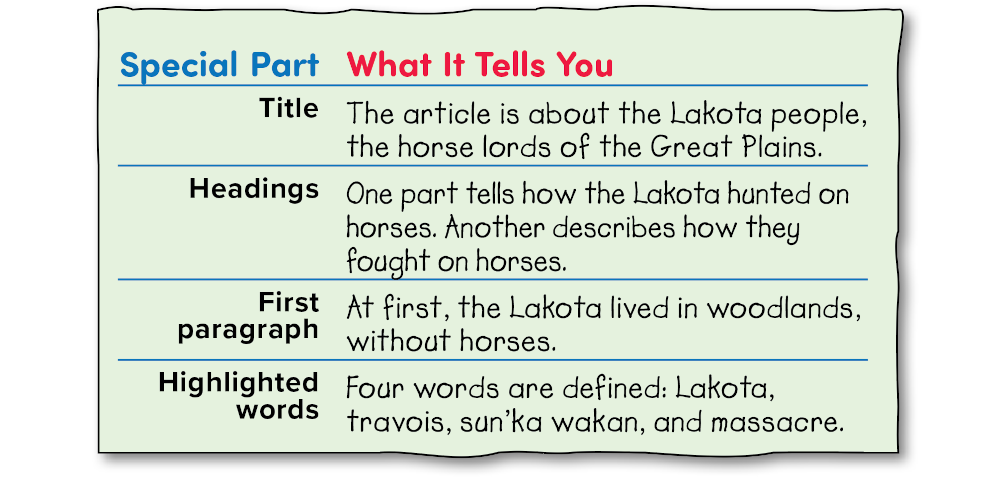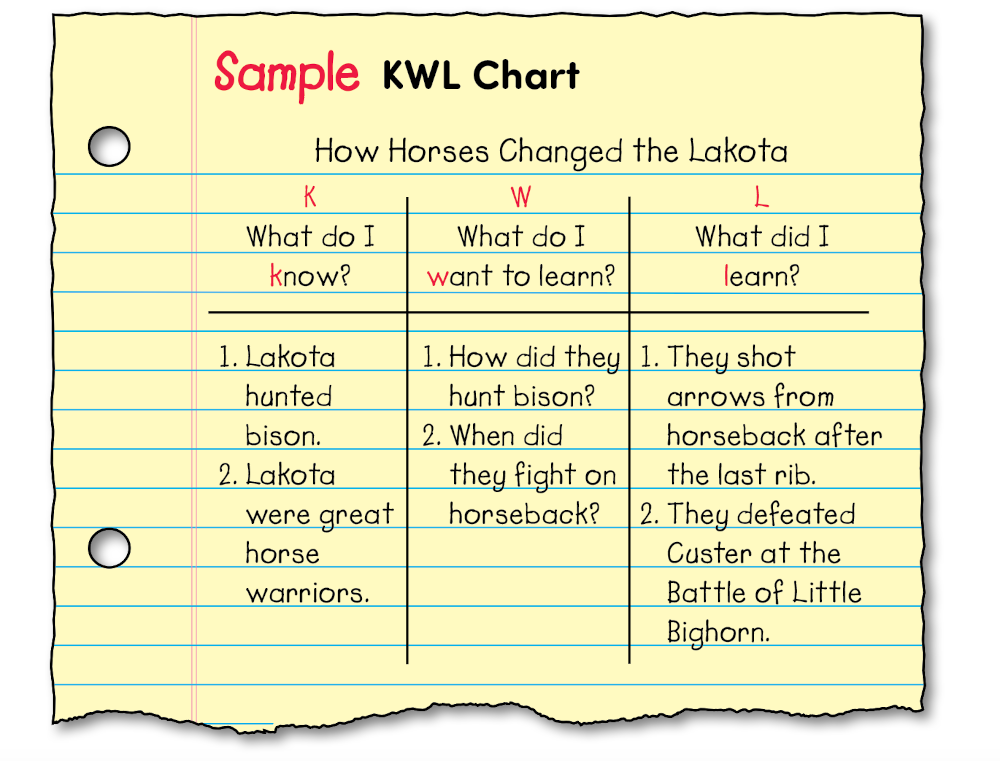WT 218
Page 218
Reading to Understand Nonfiction
Nonfiction provides factual information about all sorts of topics—current events, ancient civilizations, sports, animals, movie stars, supernovas, wonders of the world. Nonfiction helps you discover amazing facts about your universe!
Improve Your Nonfiction Reading
🟪 Read often. Read in school and out—anything that interests you.
🟪 Try different types. Read books, magazines, blogs, maps, graphs, photo essays.
🟪 Read at different speeds. Go fast for fun. Slow down for interesting details.
🟪 Use reading strategies. This chapter will show you how.
 © Thoughtful Learning 2025
© Thoughtful Learning 2025
🟪 Read often. Read in school and out—anything that interests you.
🟪 Try different types. Read books, magazines, blogs, maps, graphs, photo essays.
🟪 Read at different speeds. Go fast for fun. Slow down for interesting details.
🟪 Use reading strategies. This chapter will show you how.

WT 219
Page 219
Using Reading Strategies
A reading strategy is an activity that helps you get the most out of your reading. Use these strategies before, during, and after reading nonfiction.
Before You Read
Preview the Material 🟪 Look at special parts like the title, headings, first paragraph, and highlighted words. These parts will help you know what the material is about. When you preview the article on pages 221–222, pay special attention to these parts.

Explain and Question 🟪 Think of what you know already about the topic. Then write down any questions you have.
 © Thoughtful Learning 2025
© Thoughtful Learning 2025

WT 220
Page 220
During Your Reading
Try these strategies while reading nonfiction.
Pause 🟪 Think about each new idea as you read.

Find Answers 🟪 Look for answers to your questions.

Take Notes 🟪 Write down important and interesting facts.

Check Your Learning 🟪 Stop after each section and say aloud or write about what you have learned.
WT 221
Page 221
Sample Nonfiction Article
Horse Lords of the Plains
The first part gives background information. In the 1600’s, the Lakota people lived in the woodlands of the Upper Mississippi River, where Wisconsin, Minnesota, and Iowa now are. They gathered wild rice and hunted small game and deer. They used dogs as pack animals, dragging their household goods on a set of poles called a travois.
By the 1700’s, horses arrived from Central America through the Rocky Mountain trade networks. These big animals were tame like dogs and did the same sort of work, so a horse was called a sun’ka wakan or “holy/mysterious dog.” They transformed the woodland people into horse people of the plains.
Hunting on Horseback
This middle part tells how hunters used horses. Horses allowed the Lakota to hunt bison. In large groups, hunters rode into a herd and shot their arrows just after the final rib. The arrows marked which hunter had felled the animal. Lakota used all of the bison—eating the meat, tanning the hides for clothing, and carving the bones and horns. Horses enriched the Lakota, and they thrived, going from a population of 8,500 in 1800 to 16,110 by 1880.
Fighting on Horseback
This part tells how horses helped the Lakota defend their lands. Horses made the Lakota people nomadic, bringing them into contact with other tribes such as the Crow, Blackfeet, and Cheyenne. They fought together, but these conflicts were small compared to the wars with white settlers.
The Lakota made many treaties with the U.S. government, but most were broken as miners and settlers invaded Lakota lands. Horses allowed them to defend themselves.
In 1876, Lakota mounted warriors led by Crazy Horse defeated General Custer and his cavalry at the Battle of Little Bighorn. Horses allowed the Lakota to continue their defense until the massacre at Wounded Knee in 1890.
Lakota Horses Today
The ending sums up the article. Horses remain important to the Lakota people of the Pine Ridge Reservation. They are symbols of a glorious past, a proud present, and a hopeful future
Vocabulary
Lakota: native horse lords of the Great Plains
travois: a drag sled created by two poles, used to transport heavy goods behind a dog or horse
sun’ka wakan: holy/mysterious dog
massacre: a one-sided slaughter of many people
WT 223
Page 223
After Your Reading
Try these types of strategies after your reading. (You can use this activity.)
List 🟪 Write down new vocabulary words you learned.
 © Thoughtful Learning 2025
© Thoughtful Learning 2025
Review 🟪 Write about what you learned in the reading.
 © Thoughtful Learning 2025
© Thoughtful Learning 2025
Draw Pictures 🟪 Think about the important ideas in the article. Then draw pictures about them.
 © Thoughtful Learning 2025
© Thoughtful Learning 2025
Tip
Sometimes, classmates will read the same article. You can compare ideas about the reading.


Draw Pictures 🟪 Think about the important ideas in the article. Then draw pictures about them.

Tip
Sometimes, classmates will read the same article. You can compare ideas about the reading.
WT 224
Page 224
KWL (Know, Want to Know, Learn)
KWL is another good reading strategy. To use this strategy, you will need to make a chart. Here’s what a KWL chart looks like.

Tip
After you finish, look at your columns to see if you have answered your questions. You may decide to add more questions to the W column and then read more about the topic.
WT 225
Page 225
Mapping
Mapping is a reading strategy that helps you organize ideas about a topic. Begin by writing the topic in the middle of your paper. Then, as you read, draw a map of the main ideas and details about the topic.
Sample Reading Map

Finding Main Ideas and Details
When you read, look for main ideas. You can find them in headings, bold print, and first sentences in paragraphs.
Details explain main ideas. You can find details in the middle of paragraphs and in charts, graphs, and captions.
